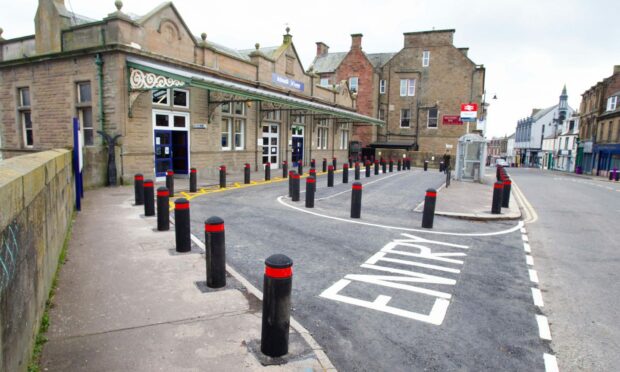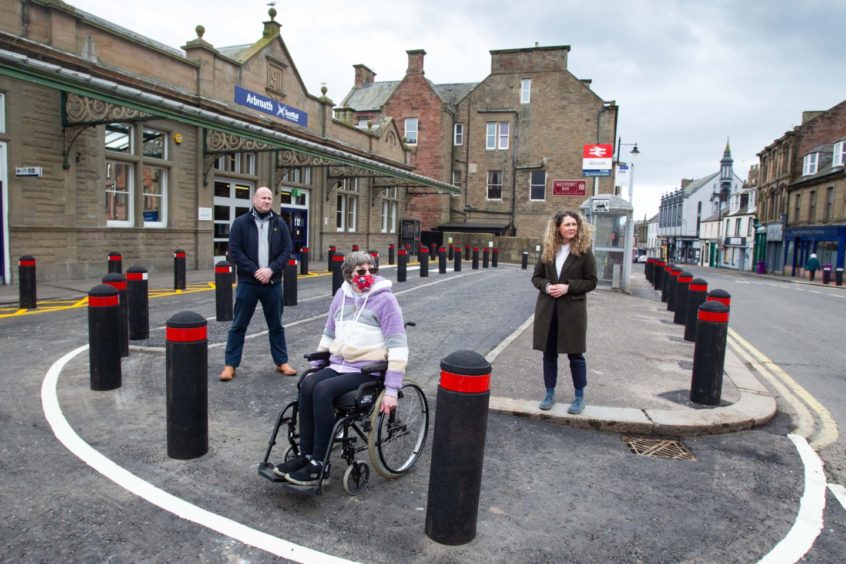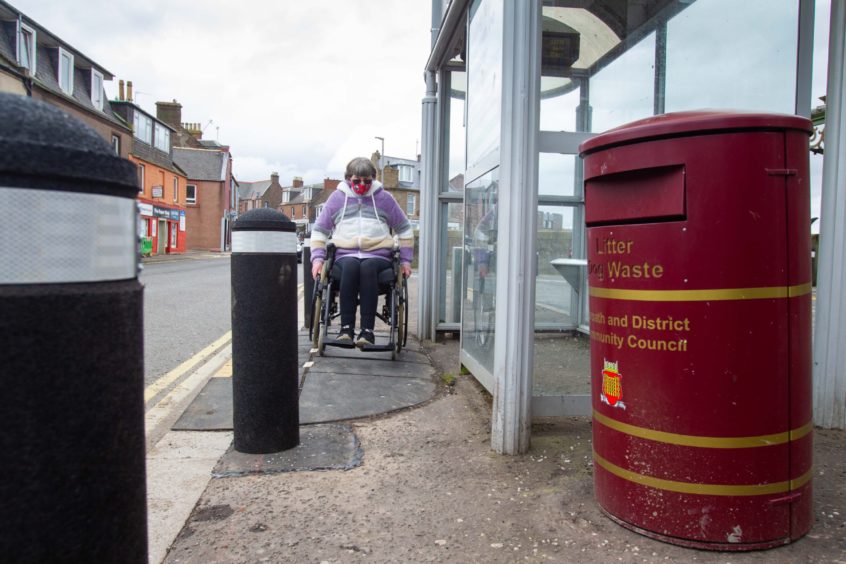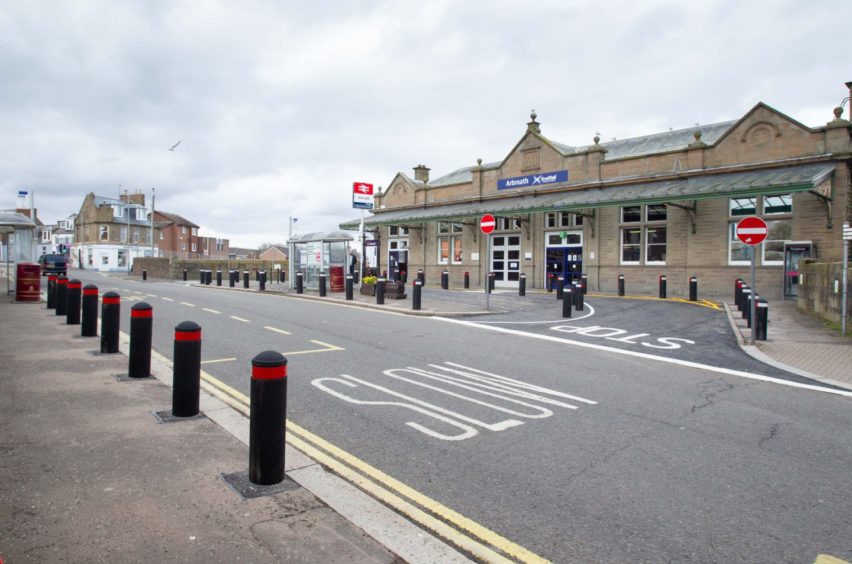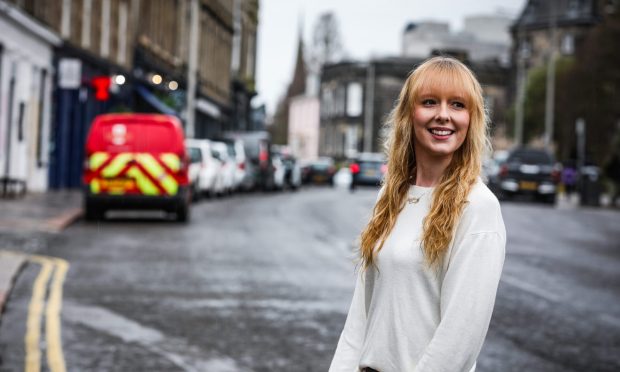Transport chiefs have been accused of overkill after installing more than 60 bollards around the entrance to Arbroath railway station.
They have been put in place to stop illegal parking around the near 175-year-old Keptie Street station, but community figures say the extent of the measures has left them stunned.
It has led to increasing speculation the measure may also be designed to relieve pressure on the bridge, under which the main east coast rail line runs to the station platforms below.
The newly-erected bollards have blocked off a previous taxi-parking area in front of the station.
But community leaders are also angry their close spacing of them has left little room on the pavement of the busy street for the disabled, visually impaired or parents with prams.
There have already been reports of some people having to go on to the road to pass down the street.
Local opposition
Arbroath Conservative councillor Derek Wann said there had been an immediate backlash to the project.
“Do Network Rail think we are going to be invaded?” he asked.
“These bollards would stop tanks.
“I am as concerned as everyone else regarding these bollards.
“There is very little room to walk on the pavement, let alone if you are a wheelchair user or have a pram, and I would be equally concerned for the visually impaired.
“I am concerned that it may also be to do with weight on the bridge. I have put the questions to Network Rail but have yet to get an answer.”
Arbroath Independent Lois Speed said she was “stunned” by the sudden appearance of the bollards.
“Network Rail has shown no consideration at all here in Arbroath for pedestrians, especially those with access needs,” she said.
“The number of bollards and the way they have been placed makes it incredibly challenging for wheelchair users, blind or partially-sighted people or parent/carers with prams and buggies.
“Blue badge holders, taxi drivers and bus services also require direct access to pick up and drop-off.
“I’m stunned at the way this has been done.”
Scotrail said the footpath access around the main station entrance is clear as the bollards are positioned at the edge of the road in yellow chevrons and not on the footpath.
Network Rail has yet to respond to a request for comment on the installation of the bollards and the structural integrity of the bridge.
Victorian origins
The current station was originally opened by the Dundee and Arbroath Railway in early 1848.
It was a link station to connect the Arbroath and Forfar Railway with the Dundee and Arbroath Railway.
It now has two platforms, a third having been taken out of service in 1990.
